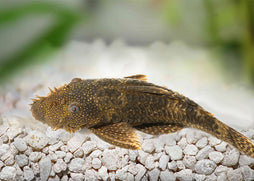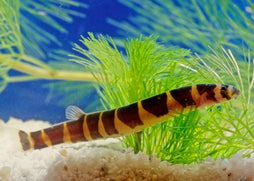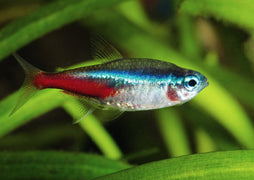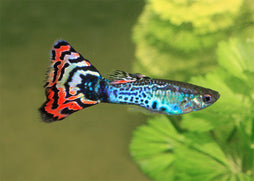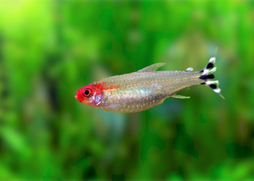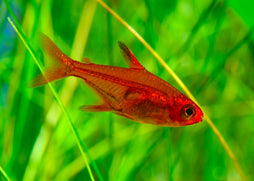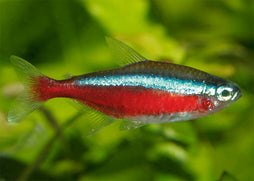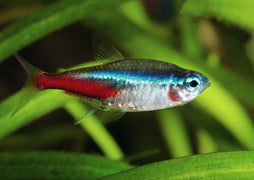Description
Aphyosemion bivitattum “Lagos” is a colourful and energetic killifish variant, originating from the rainforest streams of West Africa. This particular locality, commonly referred to as "Lagos", features vibrant striping, iridescent scales, and a compact body, making it a sought-after species among killifish enthusiasts. Like other Aphyosemion, it thrives in soft, slightly acidic water and exhibits fascinating courtship and territorial behaviour. Due to its short lifespan and delicate nature, this species is best suited for species-dedicated or carefully curated community aquariums.
Features of Aphyosemion bivitattum “Lagos”
• Grows up to 4–5 cm in length
• Males display bright red and blue horizontal striping with iridescent green or turquoise sheen
• Females are smaller and more muted in colour
• Peaceful but territorial—especially males with one another
• Egg-layer with substrate or mop spawning behaviour
• Lifespan of 1–2 years, typical of most killifish
The best aquarium size for Aphyosemion bivitattum “Lagos”
A 20–30 litre aquarium is sufficient for a pair or trio (1 male to 2 females). For multiple males, a tank of 45 litres or more is recommended with plenty of visual barriers. These fish prefer shallow, horizontal swimming space with subdued lighting and soft, stable conditions.
Tank Mate Compatibility for Aphyosemion bivitattum “Lagos”
• Pygmy Corydoras
• Ember Tetras
• Clown Killifish
• Chili Rasboras
• Amano Shrimp
Diet for Aphyosemion bivitattum “Lagos”
This species is carnivorous and prefers small live or frozen foods. Offer baby brine shrimp, daphnia, microworms, and mosquito larvae. High-quality micro pellets can be accepted but are best used as a supplement. Frequent, small feedings support colour and breeding activity.
Aquarium Setup Aphyosemion bivitattum “Lagos”
Aquarium Filtration
Use an air-driven sponge filter or gentle internal filter to maintain clean water without excessive current. Soft, slightly acidic water (pH 6.0–6.8) and low hardness (1–8 dGH) are ideal.
Aquarium Plants
Dense planting with fine-leaved species such as Java moss, Water Sprite, and Rotala is highly recommended. Floating plants like Salvinia or Amazon frogbit help diffuse light and mimic shaded forest streams.
Aquarium Lighting
Low to moderate lighting enhances colouration while creating a calm, natural environment. Avoid intense lighting, which may cause stress or encourage excessive algae.
Aquarium Heating
Maintain temperatures between 22–25 °C. Stability is essential, as these fish are sensitive to sudden changes. Use a precise heater, especially in cooler environments.
Aquarium Substrate
Use dark sand or fine gravel to replicate their natural habitat. A darker substrate also enhances their colours and supports live plant growth.
Aquarium Decorations
Incorporate driftwood, leaf litter, and spawning mops or caves for shelter and breeding. Visual breaks are essential to reduce aggression between males. Avoid sharp decor and maintain open swimming space in the mid to lower levels.




